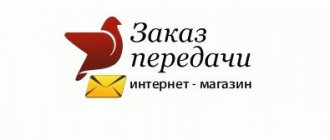What is a trade secret
According to the Federal Law of July 29, 2004 N 98-FZ (as amended on April 18, 2018) “On Trade Secrets,” a trade secret can be information that allows its owner to increase income, avoid unjustified expenses, maintain a position in the market or obtain other benefits .
This includes information of any nature that has value precisely because it is unknown to third parties. For example, there are two large manufacturers of frying pans on the market. One managed to develop a coating formula in which food would never stick to the bottom again - even if the dishes were unearthed by archaeologists thousands of years later. This technology can be an excellent bargaining chip in the competition. But if one of the employees transfers it to competitors, the company will lose its advantage and lose potential income.
What cannot be a trade secret
This law seems like a great loophole to hide unsightly information, but there is a provision for such cases. The following data cannot be secret Federal Law No. 98-FZ of July 29, 2004 (as amended on April 18, 2018) “On Trade Secrets”:
- on documents confirming the facts of making entries in the state registers of legal entities and, as well as information from the constituent documents of legal entities;
- from documents giving the right to carry out entrepreneurial activities;
- about the composition of the property of a state or municipal unitary enterprise, government agency and how they spend budget funds;
- about environmental pollution, sanitary-epidemiological and radiation conditions and other indicators that may negatively affect the safety of the population or the operation of production facilities;
- on the number and composition of employees, the payment system and working conditions, injury rates, vacancies;
- about the enterprise's debts to employees;
- about violations of the law and facts of prosecution;
- on the conditions of competitions or auctions for the privatization of state or municipal property;
- on the income and property of non-profit organizations, wages of employees and the use of volunteer labor;
- on the list of persons who have the right to act without a power of attorney on behalf of a legal entity;
- required to be disclosed by law.
How to protect information as a trade secret
It’s not enough to gather workers and tell them: just don’t tell anyone. More precisely, this can be done, but it does not impose any restrictions on them by law. If you want to do everything correctly, the algorithm is as follows.
- Determine what data should be kept secret. Documents containing this information must be marked with the stamp Federal Law of July 29, 2004 N 98-FZ (as amended on April 18, 2018) “On Trade Secrets” “Trade Secret”.
- Limit access to this information by establishing procedures for handling it. Employees should not stumble upon this data by accident. Accordingly, it is necessary to determine who, how and why can become acquainted with classified information.
- Give employees with security clearance a non-disclosure agreement to sign. It must indicate what is a trade secret, how many years it must be kept, and what sanctions are expected for disclosure.
In the process of classifying data, it is necessary to draw up a Regulation on Trade Secrets. There is no strict form for this document, but it is worth reflecting the following points.
- General provisions - basic terms and definitions, information about the organization and its head, about the structural unit responsible for information protection, legislative acts on which the organization relies when working with trade secrets.
- The procedure for classifying information as a trade secret and removing the confidentiality stamp. Here or in the application, you can also create a list of data that falls under the scope of the provision.
- The procedure for using information constituting a trade secret - on what grounds access to information is provided and terminated, how to handle it.
- Duties and responsibilities of employees who have access to information constituting a trade secret.
- Ensuring the security of confidential information - by what means the data is protected.
- Final provisions - the procedure for approving the document and its annexes, the algorithm for making changes, and so on.
A list of information constituting a trade secret and a sample non-disclosure clause can be provided in the application.
To understand what the situation looks like, look at the current documents: some companies make their Trade Secret Regulations publicly available.
Commercial information and trade secrets: types, similarities and differences
Commercial information is of wide variety. It can be combined into several groups:
- organizational (data about the company, its authorized capital, founders, etc.);
- technological (information about technologies, methods, methods being developed or used);
- statistical (number of employees, number of branches, etc.);
- informational (information about types of activities, licenses, place of registration and location of the company and its divisions, contact numbers, website address and email);
- financial (accounting statements, information about loans, certificates, explanations, reports);
- economic planning (business plans, investment plans, technical reconstruction plans, etc.);
- analytical (marketing research results, competitiveness analyses, etc.);
- other (client databases, business correspondence).
The entire body of commercial information is divided according to the degree of its commercial value:
- for restricted access information;
- restricted data;
- publicly available information.
Thus, commercial information is a broader concept than the content of the term SSKT. It combines all information related to commercial activities, including the segment of information that needs protection, called SSKT.
To correctly classify commercial information into the category of SSKT, special criteria should be taken into account - find out about them in the next section.
How to know if you have access to trade secrets
If the job requires access to trade secrets, upon hiring you sign a non-disclosure agreement, which is documented as an appendix to the employment contract. In it, you consent to access to the trade secret, undertake to comply with the requirements of the Regulations on it and confirm that you are familiar with the security measures for storing corporate secrets. In this case, you are responsible for any disclosure of information.
In order not to inadvertently violate the ban, you need to carefully read what exactly you are not allowed to do. For example, if your documents don't allow you to use their own flash drives, don't do it, even if you just want to download a photo from a USB drive for your desktop screensaver. This is already enough to bear responsibility.
Thus, a Muscovite was fired from his job for sending internal documents from his work email to his personal one. He did not agree and went to court. However, the dismissal was recognized as legal by Resolution of the Constitutional Court of the Russian Federation of October 26, 2017 N 25-P. When sending information, the data passes through a mail server owned by a third party. So, in fact, the fired employee through his actions created the possibility of leaking confidential information.
Disciplinary responsibility
Disciplinary liability is applied to employees of the organization: reprimand; rebuke; dismissal on appropriate grounds (Article 192 of the Labor Code of the Russian Federation). For each disciplinary offense, only one penalty can be applied. When imposing a disciplinary sanction, the severity of the offense committed and the circumstances under which it was committed must be taken into account.
The fact that the employee is actually involved in the disclosure of secrets protected by law must be recorded in the decision of a special commission that is created by the employer to conduct an internal investigation or audit. The commission should include persons who are not interested and who have access to classified information.
Evidence of disclosure by an employee of classified information can be written materials of the case, in particular an act drawn up based on the results of an internal investigation, explanatory notes from the organization’s personnel, testimony of witnesses (appeal ruling of the Moscow City Court dated March 20, 2013 in case No. 11-5079). The employer's order (instruction) to apply a disciplinary sanction is announced to the employee against signature within three working days from the date of its publication, not counting the time he is absent from work. If an employee of the organization refuses to familiarize himself with the specified order (instruction) against signature, then a corresponding act is drawn up.
On a note
A disciplinary sanction cannot be applied later than six months from the date of commission of the offense, and based on the results of an audit, inspection of financial and economic activities or an audit - later than two years from the date of its commission. The specified time limits do not include the time of criminal proceedings.
Disclosure of a production secret is classified as a gross violation of labor duties, and the employer, as a rule, makes a decision to dismiss on the grounds of subparagraph “c” of paragraph 6 of part one of Article 81 of the Labor Code.
If an employee challenges the termination of an employment contract on this basis, the employer is obliged to provide evidence showing that the information that the employee disclosed is a trade secret (a trade secret regime has been established in relation to them), they became known to him in connection with the performance of his employment duties, and he undertook not to disclose them (clause 43 of the resolution of the Plenum of the Supreme Court of the Russian Federation dated March 17, 2004 No. 2 “On the application by the courts of the Russian Federation of the Labor Code of the Russian Federation”). Even a seemingly insignificant violation of the dismissal procedure can lead to reinstatement and recovery of compensation in favor of the employee.
Before applying a disciplinary sanction, the employer must request a written explanation from the employee (Article 193 of the Labor Code of the Russian Federation). If the employee is ready to submit an explanatory note, a written notice of the need for an explanation need not be issued. If the situation is of a conflict nature, then it is better to prepare this notification in writing and hand it to the employee against signature.
If after two working days the employee does not provide the specified explanation, then a corresponding act is drawn up. Failure by an employee to provide an explanation is not an obstacle to applying disciplinary action. If there is an act and a document indicating that an explanation was requested from the employee, the application of a penalty is possible without an explanatory note. This measure is applied no later than one month from the date of discovery of the misconduct, not counting the time of illness of the employee, his stay on vacation, as well as the time necessary to take into account the opinion of the representative body of employees.
If, during an inspection carried out, for example, following a complaint from an employee, it is discovered that the employer has violated the dismissal procedure or fired the employee without sufficient grounds, the Federal Labor Inspectorate may demand that the violation be eliminated (the employee may appeal the dismissal to a court, a labor dispute commission or another body for the consideration of such disputes).
If the employee is reinstated, then he will have to pay wages for the entire period of forced absence, and the organization will also be brought to administrative liability on the basis of Article 5.27 of the Code of Administrative Offenses.
How will those who did not keep trade secrets be punished?
There are several types of liability for violators.
- Disciplinary - from reprimand to dismissal Article 81 of the Labor Code of the Russian Federation.
- Civil law - the violator must compensate for the losses that the company incurred due to the disclosure of information.
- Administrative - fine of the Code of Administrative Offenses of the Russian Federation Article 13.14. Disclosure of information with limited access from 500 to 5,000 rubles.
- Criminal - a fine of up to 1 million, or correctional labor for up to two years, or forced labor - up to three years, or deprivation of the Criminal Code of the Russian Federation Article 183 - up to three years.
How exactly the offender will be punished depends on the consequences of his talkativeness and the extent of the damage.
Civil liability
Civil legal relations are the relations between the organization that owns the production secret and the contractor (performer) under contracts for the performance of work (rendering services).
A person who unlawfully obtained information about a trade secret and disclosed or used it may be held liable for violation of an exclusive right. He may be required to compensate for losses caused by this violation (clause 1 of Article 1472 of the Civil Code of the Russian Federation).
The victim must prove the fact of violation of the trade secret regime and the amount of damages, as well as the cause-and-effect relationship between the illegality of the violator’s behavior and the occurrence of expenses. In this case, it is important to prove that the necessary and sufficient documentation for using the trade secret was transferred to the violator.
However, a person is exempt from liability if he used a trade secret, but did not know and should not have known that its use was illegal, including due to the fact that he gained access to confidential information by accident or mistake ( Clause 2 of Article 1472 of the Civil Code of the Russian Federation).







